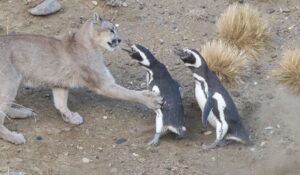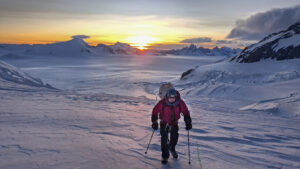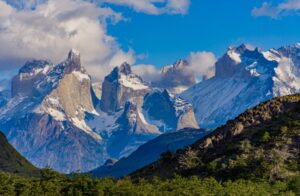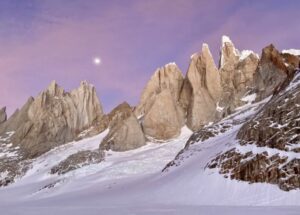On November 17, a sudden blizzard with winds reaching 193kph struck the remote O Circuit trail in Chile’s Torres del Paine National Park. Several international trekkers near the top of John Garner Pass bore the worst of the storm. Five of them died.
The incident has sparked intense criticism of park management, staffing levels, weather forecasting, and rescue delays. Here, we reconstruct the timeline of what happened and the controversies around it.
The O Circuit (also called the Paine Massif Circuit) is a 130 to 140km, 7 to 10-day trek that circles the entire Torres del Paine massif. It is the only route that includes the remote western backside of the park. Rated difficult to very difficult, it features long distances between campsites, 4,000m of total elevation gain, and exposed passes.
A group of about 40 hikers started the trek together on November 14 and formed a casual alliance through shared campsites, according to Megan Wingfield, one of the survivors of that day. Although a few of them were accompanied by a guide, most were on the O Circuit independently.
Wingfield and her group turned around 200m from the top of the pass when three retreating hikers warned them it was too dangerous to continue. As they struggled to descend in whiteout conditions, others lost their way or were stranded at the top of pass during the worst of the storm.

The five British friends. Victoria Bond is on the right. Photo: Instagram via La Tercera
The victims
The group of about 30 included five British friends who had spent months planning their Patagonia adventure. They were Victoria Bond (40, a public relations consultant from Cornwall), Hayley Newnham, Tom Player, Matt Smith, and film and TV director Christian Aldridge.
A Mexican couple — Cristina Calvillo Tovar, 37, and Julian Garcia Pimentel, 36 — and a German couple, Nadine Lichey, 45, and Andreas von Pein, 52, were independent pairs who were also part of the larger group during the final ascent to John Garner Pass. All had spent the night before at the Los Perros campsite.
As a result of the storm, five eventually died. Calvillo Tovar, Garcia Pimentel, Nadine Lichey, Andreas Von Pein — the Mexican and German couples — and Victoria Bond, who was with the five-person British group.

The O Circuit in Torres del Paine National Park. In the upper left is the Los Perros Campsite and John Garner Pass. Photo: Ecocamp.travel
Timeline
Between November 13 and 17, hundreds of hikers from various countries were on the O Circuit. “There are 8-10 campsites…and each one hosts 50 or so hikers,” Wingfield told ExplorersWeb.
On November 16, the weather was already rough, although some hikers still managed to cross the pass, despite 140kph winds. By that evening, those who would suffer the worst of the storm had converged at Los Perros campsite, the last sheltered refuge before the exposed John Garner Pass.
“The pass is only six kilometers long, the super exposed part being even shorter, maybe two kilometers,” explained Wingfield.
Chile’s presidential election on November 16-17 reduced CONAF (National Forestry Corporation of Chile) ranger staffing by about half, because voting is compulsory for public employees. Therefore, any weather evaluations that evening were not site-specific.
No ranger was present at Los Perros or on the pass itself to evaluate the weather or to consider temporarily closing the route. Campground staff (hired by a private concessionaire) shared only standard public weather apps, which predicted light rain and winds up to 100kph, conditions considered ”normal” for the pass, according to Christian Aldridge, one of the British hikers.
At 1,241m, John Garner Pass is the highest point of the O Circuit, located on the west side of the Paine massif. The last part is above tree line. Harsh winds of 80-100kph often hit this area, and bad weather can come at any time. The trail follows a narrow ridge with steep drops on both sides.
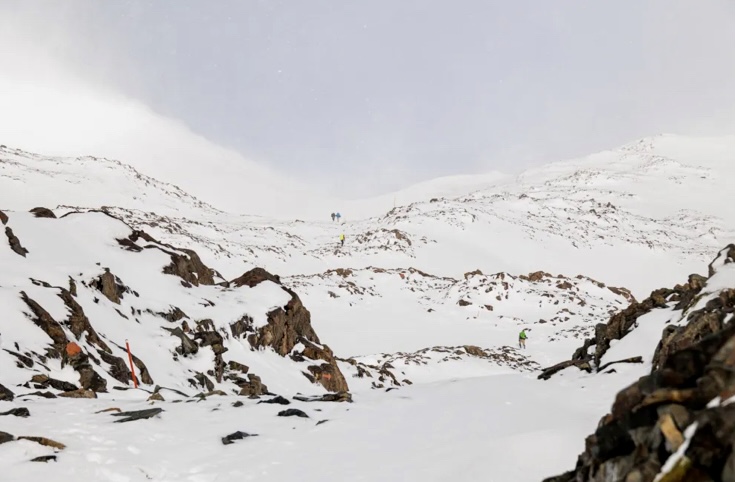
The ascent route at John Garner Pass. Photo: Charles Masters/walkingwithmountains.uk
The storm
On November 17 between 5 to 7 am, about 30 hikers left Los Perros for John Garner Pass. Conditions started drizzly, but deteriorated rapidly after 10 am. Winds reached 193kph, and visibility dropped to less than three meters. The temperature fell to −5 °C, but the wind chill was far below -20°C.
“We all studied the Windguru website the night prior,” recalled Megan Wingfield. “On the advice of the Los Perros campsite staff, [we] left early because that was our ‘best weather window.’ The weather changed extremely quickly to life-threatening conditions.”
Those who had the unlucky timing to be at the highest point of the circuit, received the full lethal force of the storm. Wingfield told ExplorersWeb:
By the time conditions became life-threatening, we were all fairly compact together because the exposed part of the pass is only around 2km…None of us remember seeing the German or Mexican couples. We believe they were ahead of us, and therefore higher up the pass when we all turned back.
In the blowing snow and poor visibility, it was also impossible to keep track of others, including the five-person British group.
Those who turned back barely made it down safely. Wingfield described to The New York Times how bodies slid in all directions and one hiker went for a long whipper down the icy slope. Although some of the survivors were injured, Wingfield and most of the others managed to retreat down to Los Perros on their own by noon.
But five had not.
A distress post appeared on the Torres del Paine Facebook group around 2 to 3 pm. Initial response by CONAF was slow, and bad weather grounded the helicopters.
Rescue and body recoveries
On November 18, volunteer rescue teams made up of the survivors reached the area on foot and found some of the bodies scattered over a one to two-kilometer area near the pass.
Incredibly, two of the hikers were still alive…barely. But despite the help, they couldn’t hang on. Megan Wingfield explained:
Cristina [Tovar] was found by the search-and-rescue team of fellow hikers. She was found first. She was still alive…They brought her down on a stretcher made from hiking poles, rope, and tarp. She became unconscious on the way down and suffered cardiac arrest. She got many rounds of CPR by doctors in the group of hikers (there were many), but was not able to be revived.After Cristina, they found Julian [Pimentel]. He was deceased when they found him and not brought down back to camp. Then, search and rescue hikers also found Nadine [Lichey], still alive. They were not able to move her, so they brought up bottles of hot water and sleeping bags to wrap her in. She passed fairly quickly, still on the mountain.
The next day, the weather improved enough for limited helicopter operations. Those with bad injuries were airlifted to the hospital in Puerto Natales. The rest hiked out on their own. The prosecutor announced the start of a formal investigation.
On November 20–22, a helicopter recovered the bodies, and the repatriation process began, coordinated by the UK, Mexican, and German embassies.
Twenty-seven hikers required medical attention, according to the final tally released by the Regional Government of Magallanes on November 20.
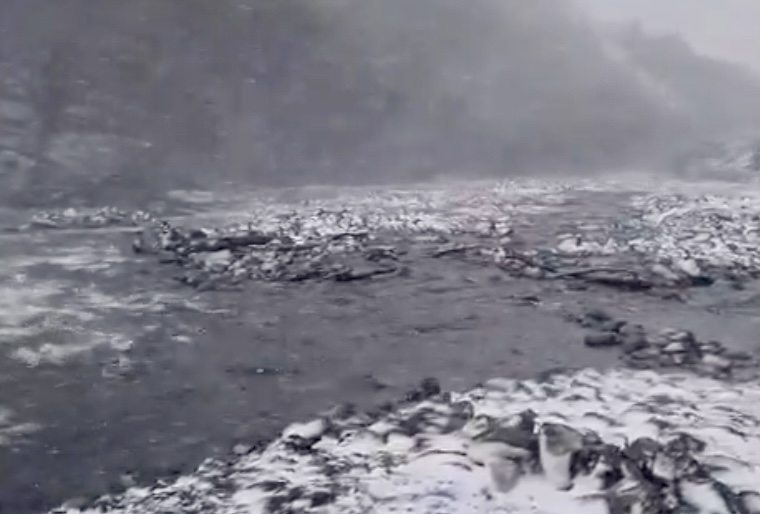
Frame of a video of the storm, published by the Chilean press.
Controversies and criticisms
Following the incident, criticisms emerged, mostly by the survivors, who have publicly shared accounts through media interviews, social media posts, and statements to investigators. They criticize, in particular, the rangers’ absence on election day (November 16–17).
According to the survivors, there were inaccurate weather forecasts and a lack of real-time monitoring. Public apps and campground briefings predicted maximum 100kph winds, less than half the actual gusts. No satellite or on-site weather stations existed for the backside of the range.
They also blame the Park for the delayed rescue response. The first Facebook distress call was initially dismissed. Helicopters could not fly until November 19 due to extreme winds and zero visibility, forcing injured survivors to self-evacuate. Bodies remained exposed for nearly three days, according to the rescue chronology published by La Tercera.
In the survivors’ opinion, another weak point is the optional guiding on a very difficult route. Despite the O Circuit’s high risk rating and remoteness, professional guides are not mandatory, unlike many comparable routes worldwide.
These have directly fueled the ongoing probe and public backlash against CONAF (the park authority), the campground operator Vertice, and the lack of broader safety protocols.

Cristina Calvillo Tovar, the Mexican doctor, was one of the victims. Photo: Emol.com
A horror film
Aldridge told the press that the storm was a “horror film.” He sharply criticized the forecast inaccuracies (“100kph predicted; it was triple that”) and the absence of rangers due to election staffing shortages was “mismanagement at its worst.” The other survivors described the terror of ”screaming names into the wind,” and watching friends vanish meters away in the whiteout.
CONAF temporarily suspended new O Circuit reservations during the aftermath and is conducting an internal review.
Prosecutor Cristian Crisosto told Channel T13 on November 21 that survivor testimony forms the backbone of the criminal investigation into possible negligence and failure to assist persons in danger. No charges have been filed yet, but the case remains active.
Those who are more familiar with Patagonia and its mountain areas know that sudden bad weather can hit at any time, and storms are very harsh. Even 100kph winds would have been dangerous on that exposed pass.
This remains the worst incident in Torres del Paine National Park since the 2011 wildfire that claimed one ranger’s life and burned nearly 18,000 hectares.
Megan Wingfield concluded:
It was unimaginably terrible. And just the lack of response from anyone in the park…It was shocking how we did this all ourselves with our limited resources. Luckily, half the group of hikers were doctors, including my husband and I, but even so, there was not much we could do. Ugh.
We are still processing the treachery of both the storm on the pass and the aftermath. The Mexican couple were both physicians and so was Nadine [Lichey]. All five victims were such smart, capable, able-bodied people…so tragic.
Obviously, none of us would have attempted this hike if we’d had any idea.
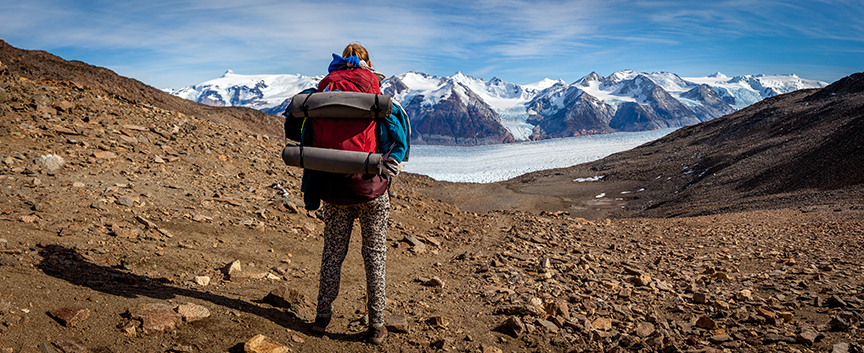
John Garner Pass in good weather. Photo: Shutterstock

